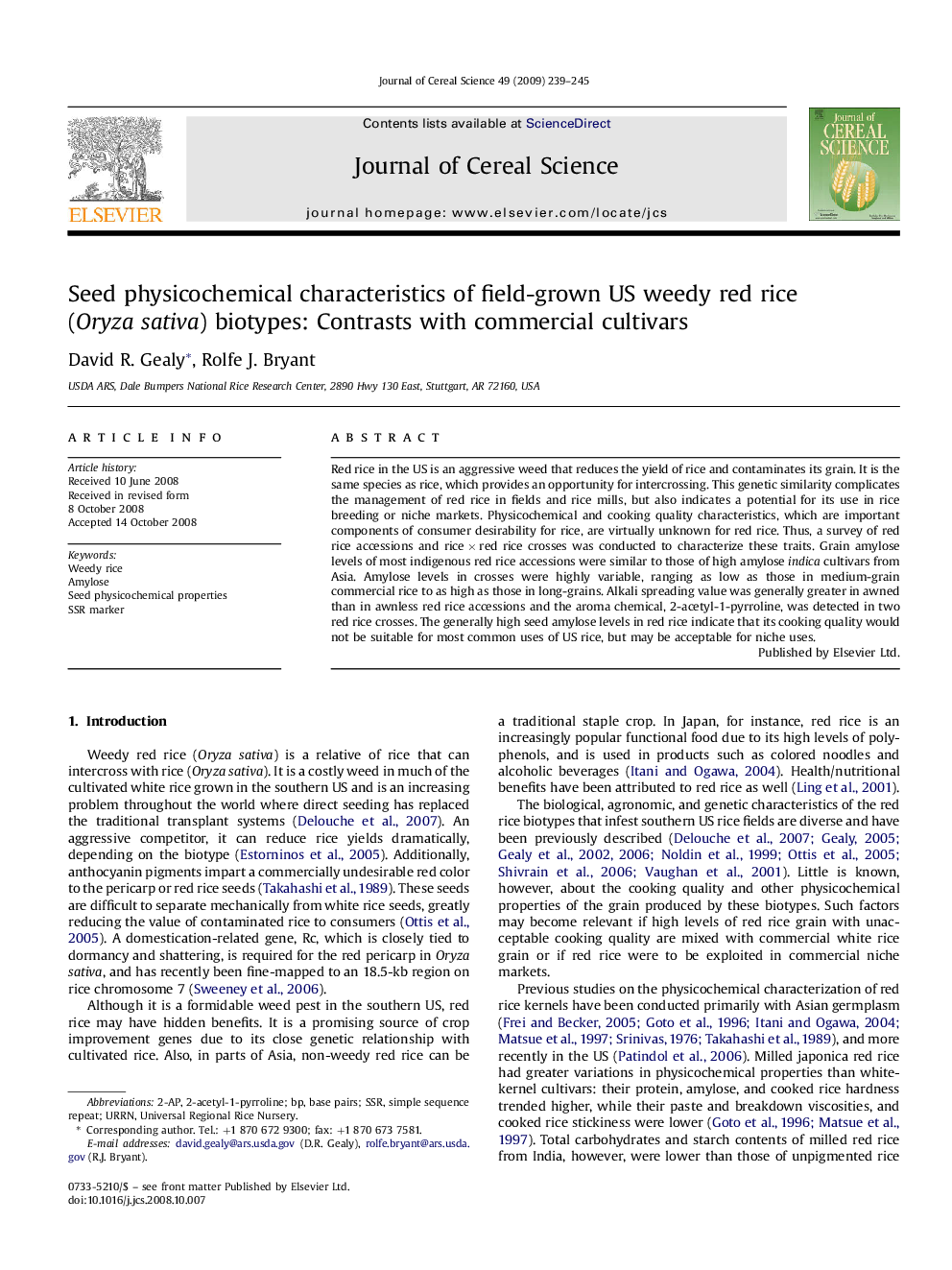| Article ID | Journal | Published Year | Pages | File Type |
|---|---|---|---|---|
| 4516676 | Journal of Cereal Science | 2009 | 7 Pages |
Red rice in the US is an aggressive weed that reduces the yield of rice and contaminates its grain. It is the same species as rice, which provides an opportunity for intercrossing. This genetic similarity complicates the management of red rice in fields and rice mills, but also indicates a potential for its use in rice breeding or niche markets. Physicochemical and cooking quality characteristics, which are important components of consumer desirability for rice, are virtually unknown for red rice. Thus, a survey of red rice accessions and rice × red rice crosses was conducted to characterize these traits. Grain amylose levels of most indigenous red rice accessions were similar to those of high amylose indica cultivars from Asia. Amylose levels in crosses were highly variable, ranging as low as those in medium-grain commercial rice to as high as those in long-grains. Alkali spreading value was generally greater in awned than in awnless red rice accessions and the aroma chemical, 2-acetyl-1-pyrroline, was detected in two red rice crosses. The generally high seed amylose levels in red rice indicate that its cooking quality would not be suitable for most common uses of US rice, but may be acceptable for niche uses.
